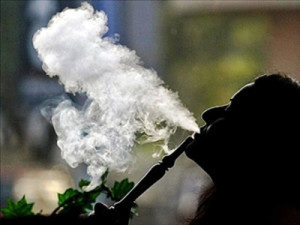An American Lung Association study in 2007 showed a worldwide increase in shisha use in recent years, mostly among youths and university students. Teenagers tend to think shisha is a herbal product with the belief that when they smoke shisha, no tobacco is inhaled. This ideology is wrong, because the herbal packaging itself contains tobacco.
In 2010, the “Monitoring The Future” survey found that 17% of high school seniors in the United States smoked shisha in the previous year. By law, registered cigarette products in Malaysia can only have a certain permissible level of nicotine and tar (Total Aerosol Residue). Shisha comes in many different packaging, therefore it is difficult for smokers to know how much tobacco content varies between them.
In Malaysia, cigarette emission standards are regulated according to the Control of Tobacco Product (Amendment) Regulations 2008. The current maximum allowable level for nicotine is 1.5mg per cigarette, while tar levels should not exceed 20mg per cigarette.
Even the way shisha is prepared poses a danger to its fans who enjoy taking deep breaths of the relaxing, aromatic smoke before exhaling into their surroundings.
At the very top of a hookah, the bowl containing shisha is covered by aluminium foil, upon which burning charcoal is placed to roast the tobacco. Toxic fumes are produced by the reaction between the burning charcoal and aluminium foil.
The hookah’s glass base, which acts as a chamber for the shisha smoke, is also filled with water. This water mixes with the toxic gases and increases the smoke’s humidity, which causes the carcinogenic fumes to stay in the lungs longer.
As shisha smoking is a largely social activity, the nozzle used to inhale and exhale the flavored smoke is usually shared between many people. A study showed that the nozzle can play host to huge amounts of micro bacteria and virus such as tuberculosis and even Hepatitis A, therefore increasing a shisha smoker’s risk of contracting diseases.
According to the WHO, a 60-minute shisha session produces about 100 to 200 times more smoke than a regular cigarette, which translates into a heavier output of toxic fumes for both the smoker and the people around them. As shisha sessions are considered a leisurely activity, smokers also tend to take deeper puffs over a longer period of time, which can cause a higher risk of developing oral and lung cancer due to prolonged absorption of toxins.
Anything that contains tobacco increases the chance for cancer cells to develop. People think shisha is harmless, whereas they at least know cigarettes are bad for them. So ironically, shisha smokers have a higher risk of developing lung cancer because of the ‘no-tobacco-content’ misconception!”
In my opinion, merely raising awareness on the dangers of shisha smoking will not have any lasting change. It is all about studying and diagnosing the community’s pre-existing behaviour before we intervene with behavioral change measures. Only then will we succeed in changing the misconceptions of shisha.
However, the proposed “community diagnosis” is not a blanket rule. People’s culture and background will determine their attitudes towards shisha smoking. It is imperative that we understand that before we introduce any health measures. Only then will we succeed in changing the misconceptions of shisha.
This is the personal opinion of the writer and does not necessarily represent the views of The Malaysian Medical Gazette.

